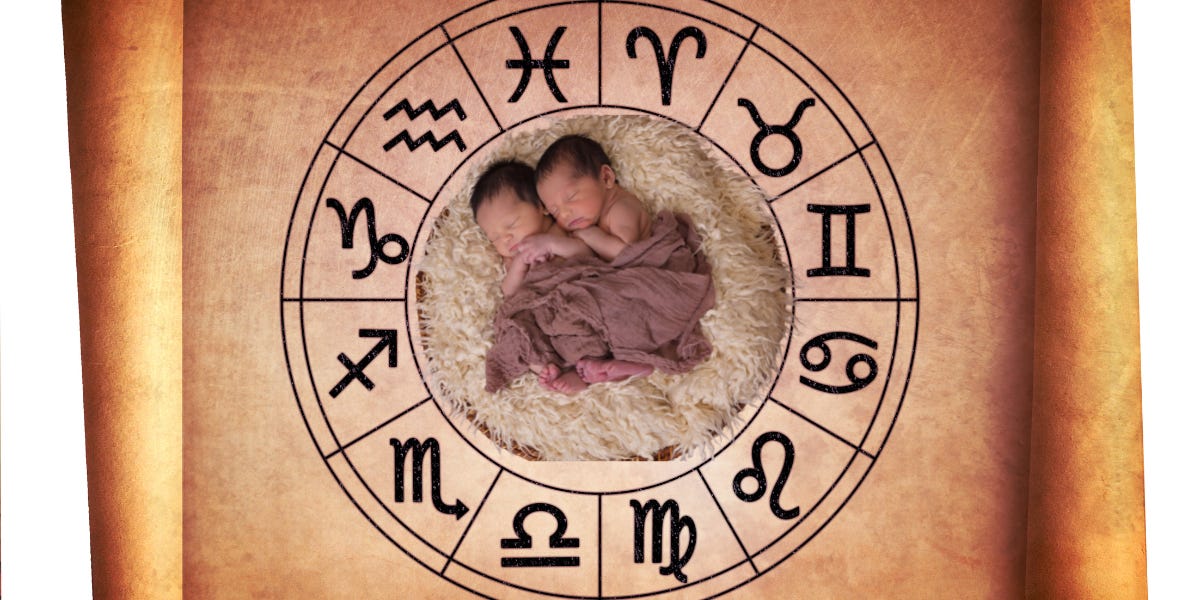Birth Time Rectification in Vedic Astrology for Accurate Horoscopes
Learn how birth time rectification improves horoscope accuracy using principles of Vedic astrology, Lagna adjustment, and divisional charts ⏳
What Is Birth Time Rectification and Why It Matters in Astrology ⏳
Birth Time Rectification is the first and most crucial step in horoscope analysis. Are you confident that your birth time is accurate? In Astro-Jagriti sessions, I often interact with seekers who are convinced about the correctness of their recorded birth time. However, when I verify it against past life events, I frequently find discrepancies—ranging from a few seconds to several minutes. To ensure horoscope accuracy, one must begin with accurate astrological timing.
The most critical element in Hindu Astrology or Vedic astrology methods for horoscope reading is the birth time rectification process. For creating a reliable natal chart, we need three key details: date, time, and place of birth. The accuracy of the chart is almost entirely dependent on the precision of the birth time.
Errors in recording birth time may arise due to inaccuracies in clocks or watches. The confusion between local mean time and standard time also contribute to discrepancies.. Even when the time is noted at the exact moment of birth, the recording device itself could be off. Therefore, the only reliable way to determine the correct birth time is by rectifying birth time in astrology.
In simple terms, this exercise involves adjusting the recorded time based on significant past events in the individual’s life. The goal is to correct the reported birth time and align it more closely with the actual moment of birth, improving the quality of horoscope analysis from the very start.
Understanding Lagna and Its Role in Birth Time Rectification ⏳
In Nirayan astrology, the system commonly followed in India, there is the concept of Lagnam also known as Lagna or 'Ascendant. The Ascendant sign is the point on the eastern horizon that rises along with the Sun each day. In other words, it is the point on the ecliptic that becomes visible on the eastern horizon at a specific time and location. This point coincides with the Sun at the exact moment of sunrise. The Lagna moves through each rasi, or zodiac sign, roughly every two hours, completing the full astrological cycle in 24 hours. Hence, it stays in one rasi for about two hours—making the importance of Lagna in astrology especially significant for birth chart rectification.
For example, suppose on a Krishna Chaturthi, sunrise occurs at 5:40 AM at a particular place in India. At that moment, the Lagna is in Taurus at 4 degrees. By around 7:40 AM, it moves into Gemini. Now imagine a child is born at 7:39 AM—technically still under Taurus, though it’s about to transition into Gemini. If there's even a small clock error and the birth time is recorded as 7:40 AM instead of 7:39 AM, the astrologer might take Lagna in Gemini based on the reported time of 7:40 AM. However, in reality, the Lagna might still be in Taurus or on the cusp. As a result, the astrologer ends up constructing a completely inaccurate natal chart, affecting the entire horoscope analysis, which could even misrepresent the perceived strength of one’s nakshatra as explored here. This highlights how even a minor deviation can severely impact horoscope accuracy.
Why Divisional Charts Matter in Correcting Birth Time ⏳
The example above relates only to the rasi chart, which forms the base of a person’s horoscope. However, to improve horoscope accuracy, astrologers rely on several divisional charts that go deeper into specific areas of life. The astrological divisional charts play a vital role in the birth time rectification process. These include the Navamsa chart (D-9) for dharma and family, the Dasamsa chart (D-10) for profession, the Saptamsa (D-7) for children, and the Dwadasamsa (D-12) for parents. Each of these charts uses a refined division of the zodiac, making the process of rectifying birth time in astrology even more important.
In these charts, the Lagna—or Ascendant sign—changes much more quickly than in the rasi chart. For example, the Dasamsa chart is constructed by dividing each rasi into ten parts and plotting them according to specific rules. In this case, the Lagna shifts signs approximately every 12 minutes. Therefore, even if the recorded time appears accurate for the rasi chart, it might still be too imprecise for divisional charts. This can lead to incorrect planetary dashas and a misleading view of career or life path.
How Navamsa and D-60 Help Refine Birth Time ⏳
Let us take another example using the Navamsa chart (D-9), which is central to understanding one’s inner strengths, marital life, and spiritual path. In this chart, each rasi is divided into nine parts and mapped onto a new chart based on established Vedic astrology methods. Since each segment spans approximately 3 degrees and 20 minutes, the Lagna changes signs about every 14 minutes. This makes birth chart rectification especially critical for accurate interpretation in Navamsa.
Now consider the Shashtiamsa chart (D-60), which is used to assess past life karmas and deep-rooted traits. This chart divides each rasi into sixty parts, and here the Lagna can change signs in just two minutes.
This level of precision demonstrates how essential astrological timing is in correcting birth time. Although it is not possible to predict future but the smallest error in birth time can shift the Ascendant sign and alter the interpretation of a person’s karmic patterns, fortune, and personality traits. Such nuances make it clear why correcting birth time using divisional charts is a key step for astrologers aiming to improve horoscope prediction and analysis.
Practical Steps to Rectify Birth Time Based on Life Events ⏳
Birth Time Rectification is a time-intensive yet highly rewarding process. The goal is not necessarily to reach mathematical precision but to refine the birth time so it aligns closely with real-life experiences. Even the best quality astrologers may not have the time to conduct a detailed birth chart rectification during a typical consultation. Therefore, a practical approach is to focus on the seeker’s specific concern and limit the correction of birth time to the relevant astrological divisional charts.
For example, if the seeker asks about career prospects, we can focus on two charts: Navamsa (D-9) and Dasamsa (D-10). These two charts are ideal for evaluating spiritual tendencies and professional life, respectively. To begin the rectification process, we ask the seeker about major events such as marriage or career milestones like job offers, promotions, or terminations. If the dasha system doesn’t align with the given events, we then adjust the time slightly to trigger a Lagna shift in the respective charts. This approach helps us correct the birth time without overcomplicating the session, ensuring greater horoscope accuracy with fewer assumptions.
Validating Birth Time Through Multiple Divisional Charts ⏳
Once the Lagna is fixed in a particular rasi, we proceed to validate the corrected birth time by checking it against other significant life events. This step further strengthens the astrological timing and confirms the reliability of the rectification. We explore additional divisional charts such as Drekkana (D-3) for sibling relationships, Saptamsa (D-7) for children, Dwadasamsa (D-12) for parental influences, and Siddhamsa (D-24) for education. When these charts are cross-checked with known events and they align, it indicates that the natal chart correction is successful.
This technique of rectifying birth time in astrology is not just about mathematical accuracy—it’s about creating a foundation that mirrors reality. Accurate use of these divisional charts makes it easier to assess planetary trends and apply meaningful astrological remedies. Therefore, improving the horoscope analysis process begins by validating the Lagna across multiple life domains.
Can Horoscope Be Accurate Without Correct Birth Time? ⏳
Horoscope analysis can still be performed even when the exact birth time is not available. It is also possible to work with an incorrect time or date, though with some caution. In such cases, intuitive astrology plays an essential role. During a session, there is often an unconscious energy exchange between the Reader and the Seeker, which aids in interpreting the natal chart. The role of intuitive judgment in Vedic astrology methods is well acknowledged, especially when dealing with uncertain data.
However, for intuition to be reliable, the Reader must have a well-developed spiritual awareness. A strong intuitive ability often stems from a positive mindset, adherence to Sadachar (ethical conduct), and sound reasoning. These qualities are crucial in situations where the horoscope accuracy depends more on insight than data. When combined with birth chart rectification, intuitive interpretation ensures that the astrologer offers relevant and practical guidance to the seeker.
Using Nashtajatakam When Birth Time Is Unknown ⏳
Nashtajatakam (lost horoscopy) is a specialized branch of astrology designed for situations where the birth time is completely unknown. It offers structured techniques to construct a horoscope by intuitively or analytically deducing the missing data. As outlined in Chapter 86 of the Brihat Parashara Hora Shastra, these methods are well-documented and respected in traditional Vedic astrology. Interestingly, even when the recorded time is available, many astrologers intuitively use principles from Nashtajatakam during the birth time rectification process.
This shows that astrology for unknown birth time is not just possible, but also effective when practiced with the right tools. When the birth time is incorrect, the accuracy of readings depends significantly on the astrologer’s ability to apply both intuition and astrological methods. In such cases, planetary dashas and Ascendant sign transitions must be examined more carefully to create a chart that still reflects the seeker’s real-life experiences.
Why Remedies Fail Without Corrected Birth Time ⏳
In my experience, astrological remedies often fail to produce results when based on an inaccurate birth chart. This is why it’s essential to correct birth time before suggesting any spiritual or practical interventions. Birth time rectification ensures that the foundation of the natal chart is solid, allowing remedies to align with the seeker’s actual planetary positions and life path.
For those unfamiliar with astrology, this article might seem technical. I sincerely apologize for that. Explaining the birth time rectification process in entirely non-technical language is a skill I continue to develop. However, please don’t be discouraged by the complexity. Instead, focus on the intent—emphasizing the immense value of birth time rectification before getting a horoscope reading done. It forms the basis for accurate horoscope interpretation and ensures the reliability of any analysis or guidance that follows.






